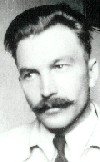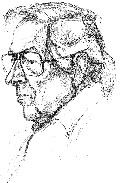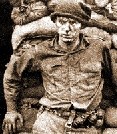Oct. 2006 conference: War and the Conscientious
Objector, Winnipeg:
|
|||||||||||||||||
Doukhobors in World War IIpresented by Koozma
J. Tarasoff
to the Panel on Religion and Conscientious Objection in the Wider World, Friday, October 20, 2006, 3 – 5 p.m. at the University of Winnipeg, Manitoba at the Conference on War and the Conscientious Objector: Historical Perspectives Copyright reserved. As a traditional peace group and social movement, Canadian Doukhobors have generally maintained an absolutist stance in relation to war and peace. Their history of persecution, the burning of guns, and their close association to the international Russian philosopher and writer Lev N. Tolstoy have given them almost genetic-like qualities of opposing the institution of militarism and war. In essence, Doukhobors are classic conscientious objectors to military service. For me the idea of conscientious objection to war has special meaning. It closely relates to my Russian ancestors the Doukhobors who in 1895 held a very unique manifestation for a peaceful civilization (Tarasoff, June 2006: 344). The first act took place on Easter Sunday in the Transcaucasian territory of Elizavetpol of southern Russia. Matvey Lebedev and ten other Doukhobors threw down their guns while training in a local reserve battalion. They said that war and moral behaviour are incompatible. As a result the dissidents were sent to a disciplinary battalion and exiled along with 60 other young men in active service who followed their example. The second act literally shook the world. It took place midnight June 28-29 (Old Style; New Style is 11-12 July) 1895 in three settlements of Transcaucasia (between the Caspian and Black Seas) when 7000 Doukhobors simultaneously set ablaze their rifles, pistols and swords in the first mass protest in history against war and militarism. What a spectacle this was! What a dilemma for the authorities! The reaction was swift and predictable with severe beatings, floggings and exile. To go against the church and the state was treasonous. [Also see: Doukhobor Peace Day] Thanks to the assistance of world-renowned writer Lev N. Tolstoy along with Russian intellectuals and the Society of Friends (Quakers), the more persecuted Doukhobors were saved the fate of extinction. In 1899, some 7,500 of these Russian pacifists were exiled to Canada (including my grandfather and grandmother) and approximately 40,000 of their offspring reside here to this day. A similar number reside in Russia and about 500 in the USA. Annually Doukhobors continue to commemorate the 1895 acts as heroic, pioneering, and as one of the most viable alternatives to the creation of a nonkilling society. Their mentor Tolstoy was not only against war, but was absolutely against alternative service. He emphasized personal experience and felt that people ought to cease cooperating with the entire process of waging wars. With that historic backdrop, Canadian Doukhobor behaviour during World War II was predictable. William Janzen in his Ph D thesis has shown that most Doukhobors opposed the call to arms by the state (Janzen, 1981). They based it on the notion of the Spirit Within or the God Within, along with the Biblical commandment of ‘Thou shalt not kill’. As a condition of their migration to Canada, the Government granted them a blanket exemption from military service by passing an Order-in-Council December 6, 1898. The exemption was based on precedents set in 1873 by Mennonites, Quakers and Tunkers. In the face of opposition from people like Member of Parliament J. S. Woodsworth to officially oppose the war (Socknat, 1987: 195), to Doukhobor lawyer Peter G. Makaroff who ‘turned the other cheek’ when he was slapped by a fellow City Councilor for opposing the war, as well as to the Mennonites, Quakers and Doukhobors who by Orders-in-Council were averse to war, the Canadian authorities during World War II sought to make their laws more effective against any objectors to military service. For the government at this time, indoctrination in militarism and war was the order of the day. To facilitate this patriotic duty, the original Order-in-Council of 1898 was changed in 1940 from a blanket ‘unconditional exemption’ to a conditional ‘indefinite postponement’ of military service. The word ‘exemption’ was no longer used under the new regulation. Each CO had to prove his or her case. Membership in a religious organization or denomination was a useful and necessary condition of exemption. Doukhobor and Mennonite faiths were specifically recognized as valid conditions of exemption but in name only (Janzen, 1981: 459, 561; Hawthorn, 1955: 197-199; Sherstobitoff, 1955: 19-20; Sherstobitoff, 1955, vol. 2, no. 6, July: 26-27; Tarasoff, 2002: 382; Bondoreff, 1984: 139). In the event of a future crisis such as a war, the law may become void and thus has to be renewed by an act of Parliament. The Order-in-Council did not, however, mean that Doukhobors were exempt from national registration in 1940, which involved the assessment of a person’s capacities aged 16 to 60 for either military service or labour. As carried out in Canada, ‘national registration was actually little more than a prelude to military call-up, as very little of the voluminous information collected was put to use’ (Hawthorn, 1955: 198). The National War Services Regulations on the matter of postponement of their military training dictated further provisions for COs (Canada, Parliament, House of Commons, 1941-42: 3955). Conscientious objectors were supposed to perform alternative service on Provincial projects or in National parks at the rate of 50 cents a day and board. Those in essential services such as farming paid to the Red Cross for the duration of the war. This work and contribution was mainly designed to alleviate resentment from the wider community (Socknat, 1987: 235). In Russia, for example, the Mennonites pioneered this concept of alternative work by participating in positive noncombatant services in the forestry and medical corps based on the concept of love and help for thy neighbour. The Doukhobors did this, too, reluctantly, when during the Russian-Turkish War in 1877-1878, they were persuaded to do noncombatant service by transporting supplies to the front (Tarasoff, 2002: 413). Generally Canadian Doukhobors were opposed to both National Registration and to Alternative Service because they claimed that the Order-in-Council of 1898 provided exemption on the basis of being Doukhobors. In June of 1940, when the government’s plans for national registration were announced, a Doukhobor committee consisting of the world’s first Doukhobor lawyer Peter G. Makaroff (McConnell, 1992: 86) and another Doukhobor Wasyl Novokshonoff went to Ottawa and decided to handle their own registration of manpower in Canada for war purposes (Janzen, 1981: 465-467). They met with Minister James Gardiner and senior officials of the National War Services Department and argued that their own registration arrangement would avoid complete non-cooperation if a separate registration arrangement had been imposed. Through later correspondence and arguments, the authorities agreed and allowed the Doukhobors to register their own. The registration was done in the many Doukhobor communities in Western Canada in the fall of 1940 and over 11,000 Doukhobors were registered (Janzen, 1981: 467). Some Doukhobors, however, did not cooperate with the registration, especially in British Columbia were opposition was stronger (Janzen, 1981: 467-468). The BC Doukhobors were largely those of the former Christian Community of Universal Brotherhood (CCUB) who left Saskatchewan for British Columbia in 1908 to 1913. When their corporation went bankrupt in 1938, its successor became the Union of Spiritual Communities of Christ (USCC) headed by a charismatic leader John J. Verigin. Those who remained in Saskatchewan were the Independent Doukhobors; they were pacifists like their community-mined brethren, but they believed more in democratic control rather than that of a spiritual leader. The BC Doukhobors were told that the registration ‘had no connection whatsoever with military service’ and that on that understanding many ‘were more or less reluctantly prevailed upon to register.’ However, the zealots or Sons of Freedom, a radical fringe group numbering about 1000, had refused even after this assurance. Some prosecutions and jailing followed, but when the provincial police had to use tear gas to disperse the ensuing demonstration’ the government henceforth acted with considerable restraint. Instead of persecuting them it used ‘economic pressure in a general way’ by refusing things such as licenses for cars, and ration books for sugar, to those who had not registered. It appears that this quiet diplomacy worked and more Doukhobors accepted registration (Ibid. 469). In the initial round, in 1941, 70 Doukhobors served four months in an alternative work camp building a highway near La Ronge, Saskatchewan. At the same time, 92 chose jail in Prince Albert for four months instead of military service as well as alternative service (Tarasoff, 2002: 428, 323; Bondoreff, 1957: 13; Janzen, 1981: 491, 568). After completion of the sentence, they were required to pay a cash amount every month to the Red Cross until the war ended, as had others of military age in Saskatchewan who had neither served in the Alternative Service nor gone to jail (Bondoreff, 1984: 141). As human losses mounted in the war, the government aggressively sought more recruits, resulting in new policies in 1943. For Doukhobors this meant more delegations to Ottawa, and more discussions and meetings to alleviate apprehension about participating in the war. Compulsory medical tests were opposed, for example, in the face of prosecution. The question was not resolved until late in 1944 when ‘medicals’ were made optional (Janzen, 1981: 533). While the independently-minded Saskatchewan Doukhobors were somewhat more approachable to the question of alternative service, the Community Doukhobors in British Columbia opposed the program more categorically. Because the BC group was disenfranchised since 1931, all seemed to agree that it was all right to exempt them from any obligation to render national service (Socknat, 1987: 237). Moreover, many British Columbia Doukhobors were already employed in dam construction and forestry – industries that were vital to the national war effort; the government feared a labour shortage should the Doukhobors quit as a result of pressure from the authorities (Janzen, 1981: 559). The volatility of the situation in British Columbia was demonstrated by the following incident. In December 12, 1943, 3500 Community Doukhobors and local citizens gathered in Brilliant, Castlegar to hear Major J. B. Cowell (wearing full military regalia) together with government officials to speak about the need to assist the war effort. John J. Verigin, as spokesman for the Union of Spiritual Communities of Christ (USCC) organization appeared and categorically rejected the alternative service proposals. The four-hour meeting came to an end as a written reply was submitted to the officials (Trail Ad News, December 16, 1943). Zealots reacted by disrobing. They sang psalms, prayed and burnt their non-Doukhobor clothes as if to renounce worldliness (Jansen, 1981: 537-539; Trail Ad News, December 16, 1943). Next day the big Brilliant Jam Factory building, the long fruit packing shed, stores, and other buildings were destroyed by a mysterious fire. The former Christian Community of Universal Brotherhood (CCUB) showcase suffered a devastating loss of $400,000 (Trail Ad News, December 16, 1943). Canadian Doukhobor involvement in World War II would not be complete without personal stories from the young men who either were persuaded to go to war, went to jail, or were involved in some government-approved alternative service programs. Here briefly are 8 stories in alphabetical order:
As with their ancestors who in 1895 burnt their firearms in Russia, Canadian Doukhobors during World War II wrestled with the issue of war and peace. A few succumbed to the propaganda of the nation state to go to war and purportedly to preserve freedom and democracy. The great majority, however, recognized that war is a failure of diplomacy, cooperation and politics. It is a failure of human beings to be friends. And it is a failure to see all men and women as brothers and sisters in a world society. For Doukhobors, Lev Tolstoy, Mahatma Gandhi, and Martin Luther King Jr. are real heroes of humankind who in their own ways have worked for the creation of a nonkilling society (Paige, 2002). In summary, approximately 100 Canadian Doukhobors went to jail during World War II for conscientious objection to war. A similar number participated in alternative service work as a way to help heal suffering members of society and at the same time to alleviate relations with the wider community. Compared to 12,000 Canadians who sought alternatives to military service, the vast majority of Doukhobors reluctantly paid to the Red Cross and otherwise avoided cooperating with the war effort as much as they could. A few have placed their military taxes in the Peace Trust Fund of Conscience Canada and lived a more simple life so as to avoid paying war taxes (Tarasoff, 2002: 36, 382). For Doukhobors, as with their mentor Tolstoy, the Law of Love remains as having universal survival value for today and the future (Brock, 1972: 470). Their goal as with the Quakers is to support policies that take away the occasion for war and lead to the creation of a nonkilling just society. Update February 2021: About 6 months after this was written, Doukhobor historian/genealogist Jonathan Kalmakoff initiated the Doukhobor World War II Project, May 23, 2007. He hopes to compile a list of the approximately 25% of all Candian Doukhobors who enlisted in the military during WWII. See his work in progress. By 2009 he tallied 158: Saskatchewan 118 (75%), Alberta 20 (13%), British Columbia 16 (10%), Manitoba 3 (2%), Ontario 1. Though no indication is shown for which branch of Doukhobors each soldier was raised, all from Saskatchewan, Manitoba and Ontario are probably from Independent Doukhobor families. The many Doukhobor in Russia who enlisted in the Soviet military are not part of this list. Recommended ‘Big Brilliant Jam Factory Burns in Midnight Fire’, Trail Ad News, December 16, 1943. Bondoreff, Ivan G. ‘The Named Doukhobors of Canada’, Mir, vol. 2, no. 7-10 January 1957: 12-15; (Tarasoff, 2002: 311). Bondoreff, John I. ‘Alternative Service’, Town of Blaine Lake and Rural Municipality of Blaine Lake, Bridging the Years. Era of Blaine Lake and District 1790-1980 (Altona, Manitoba: Friesen Printers, 1984), pp. 139-141. Brock, Peter. A Brief History of Pacifism from Jesus to Tolstoy (Syracuse: Syracuse University Press, 1992). Brock, Peter. Studies in Peace History (York, England: William Sessions Limited, 1991). Brock, Peter. Pacifism in Europe to 1914 (Princeton: Princeton University Press, 1992). Canada, Parliament, House of Commons, Official Report of Debates 1941-42: 3955. Quoted in Hawthorn, 1955: 198. Conscience Canada. Toronto, Ontario. www.consciencecanada.ca ‘Cowell Interprets Selective Service Regulations to Mass Meeting at Brilliant Sunday’, Trail Ad News, December 16, 1943. In Peter G. Makaroff Papers, Saskatchewan Archives Board, Saskatoon, Sask. ‘Doukhobor War Resisters.’ Mir (Grand Forks, BC), vol. 3, no. 1, May 1975: 14-15. Hawthorn, Harry B. ed. The Doukhobors of British Columbia (Vancouver: The University of British Columbia and J. M. Dent & Sons Canada Ltd., 1955): 197-199. Janzen, William. ‘The Limits of Liberty in Canada: The Experience of The Mennonites, Hutterites, and Doukhobors’, Ph D thesis, Dept. of Political Science, Carleton University, Ottawa, Ontario, August 1981. 743 pp. [Also a book.] Makaroff, Peter G. Papers in the Saskatchewan Archives, Saskatoon, Sask.: PI-81-44.3 (2) Peter G. Makaroff, Q.C. : Canada's First Doukhobor Lawyer McConnell, W. H. ‘Peter G. Makaroff, Q. C.: Canada’s First Doukhobor Lawyer’, Saskatchewan History, vol. XLIV, no. 3, Autumn 1992: 86-112. Paige, Glenn D. Nonkilling Global Political Science (Hawaii: Center for Global Nonviolence, 2002). Download the entire book free in Adobe PDF. Samsonoff, P. G. (Chairman) and J. D. Fofonoff (Secretary), USCC, ‘Doukhobors Submit Reply in Mass Meeting Resolution’, Trail Ad News, December 16, 1943. In Peter G. Makaroff Papers, Saskatchewn Archives. Sherstobitoff, William P. ‘Convention Chatter’, The Inquirer, vol. 2, no. 6, July 1955: 26-27. Sherstobitoff, William P. ‘Exclusive and Unconditional Exemption?’, letter to the editor, The Inquirer, vol. 2, no. 7, August 1955: 19-20. Socknat, Thomas P. Witness against War. Pacifism in Canada, 1900-1945 (Toronto: University of Toronto Press, 1987). [Review by John Bacher, Peace Magazine Oct/Nov 1987, p.41.] Tarasoff, Koozma J. ‘The Events That Shook the World in 1895’. Ahimsa Nonviolence (Tamil Nadu, India), vol. II, no. 3, May – June 2006): 244-246. Tarasoff, Koozma J. Spirit Wrestlers: Doukhobor Pioneers’ Strategies for Living (Ottawa, Ontario: Legas Publishing and Spirit Wrestlers Publishing, 2002). Copies of the Orders-in-Council 1898 (PC No. 2747) and 1940 (PC No. 7215) on page 382. Tarasoff, Koozma J. Transcribed interviews with John G. Bondoreff and John J. Bondoreff of Blaine Lake, Saskatchewan, August 18, 1975; Nick N. Kalmakoff, Vancouver, BC, October 17, 1975; Dr. John Postnikoff of Barrie, Ontario, April 13, 1976. Part of the ‘A Biography — Life History Study of the Doukhobors in Canada', by Koozma J. Tarasoff. Interviews are on reel-to-reel tape recordings at the Saskatchewan Archives in Saskatoon, in F 370, Koozma J. Tarasoff fonds. The Leader-Post, Regina, Sask., December 3, 1943: 18, ‘Full Text of Judgment Handed Down in Makaroff Case’. In the Saskatchewan Archives. |
|||||||||||||||||
| The Weekend History
Conference in Winnipeg (October 20-21, 2006) was relevant,
timely, well organized, and friendly. As an invited
Doukhobor participant, it was an honour to be there to
present the above paper on Doukhobors in World War
II. With Mennonite hosts, Quakers, Hutterites and
others, I felt right at home. The war in Iraq and Afghanistan threatens the instability of the world whether in Canada, USA, Europe or Asia. For those of us who have historically opposed the institution of militarism and war, our commitment to these values are being tested. As one participant reminded us, the Canada of liberal-minded Pierre E. Trudeau is not the same as the Canada of conservative- oriented Stephen Harper. In a time of crisis, we need to mobilize in a creative and appropriate way. Would we do the same or differently from the past? Would we cease to cooperate with the state’s right to wage war? Would our able-bodied men and women participate in work camps as Conscientious Objectors? Would we cease paying that portion of taxes that go to war? Or would we succumb to the propaganda of war and join it? How could we mobilize immediately? By phone? By letter? By email? By holding special meetings of the Historic Peace Groups? What is our game plan? These were some of the questions underlying the Winnipeg Conscientious Objector Winnipeg meeting. As an aid to our thinking, I would like to share some of the questions and comments that came out of the discussions. Here they are presented randomly:
|
Click on
Photos to ENLARGE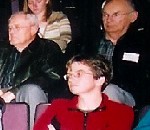 View of audience from across North America. Approximately 400 people attended each day. 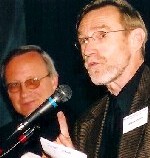 Royden Loewen, Chair of Mennonite Studies at the University of Winnipeg welcomes the Conference as Hans Werner, History professor at University of Winnipeg looks on. 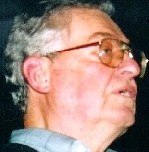 Thomas P. Socknat, University of Toronto. Author of the classic Witness Against War: Pacifism in Canada 1900-1945 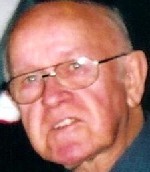 David Shroeder, Canadian Mennonite University, Winnipeg, Manitoba 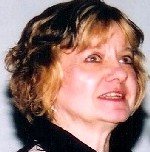 Marlene Epp, Conrad Grebel College, Waterloo, Ontario. Her late father Frank H. Epp was a prominent history professor and peace activist who participated in the First International Doukhobor Intergroup Symposium featuring Doukhobors, Molokans, Mennonites and Quakers, Castlegar, BC June 25-28, 1982. 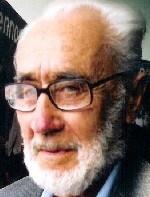 John Bergen, 85- year- old CO worked in the Dental Corps in London, England. He was born in the Ukraine. 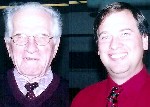 The 83- year- old CO worked on the secret iceship project near Lake Louise, Alberta during WW 2. Beside him is Conrad Stoesz, Archivist, Mennonite Heritage Centre, Winnipeg. 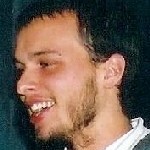 Christian Kjar, 21- year- old defected from the US Marines because his conscience would not allow him to kill.  Diana and Hans Werner, my hosts in Winnipeg. Diana is a nurse who works with a social worker on large case loads in the inner city. Hans graduated as a Civil Engineer, then worked for 20 years on a farm, and finally decided to become a history professor at the University of Winnipeg, Manitoba. His father was born in Siberia. Photos by Koozma J. Tarasoff, October 26, 2006. All rights reserved. |
||||||||||||||||
Response from the Founder of the Center for Global NonviolenceMr. Koozma J. TarasoffResearcher, writer, publisher, and champion of the Doukhobor legacy Ottawa, Canada Dear Koozma,
Thank you for your important summary of some outstanding insights from the C.O. Winnipeg Conference. The inspiring nonkilling commitment of the U.S. Marine resister who fled for asylum to Canada is unreported in the USA. Profound respect to him and those who shelter him. I am not sure whether your attachment of the Conference report will be forwarded with this message to our dear colleague Mairead Maguire. She is trying to raise nonkilling and nonviolent consciousness at a Rome Summit of Nobel Peace Laureates during November 17-19. She is chairing a session intended to proclaim an International Charter for a Nonkilling World. In any case, Mairead can access your paper on the Doukhobors at your Spirit Wrestlers website — www.spiritwrestlers.com. And she can request the Attachment to be sent to her by message to your wife Kristina Kristova whose email is here. Mairead is an inspired voice for nonkilling. The Doukhobor story can strengthen it. And she can strengthen the Doukhobor message to the world. See his book: Nonkilling Global Political Science |
|||||||||||||||||
A Nonkilling, Nonviolent World for the 2lst Century |
|||||||||||||||||
by
Máiread
Corrigan Maguire, Nobel Peace Laureate 1976.
Presented at the 7th
annual World Summit of Nobel Peace Laureates,
Rome, l7-19 November, 2006, and reproduced in
JUST
Commentary, Vol 7, No 1 (January 2007).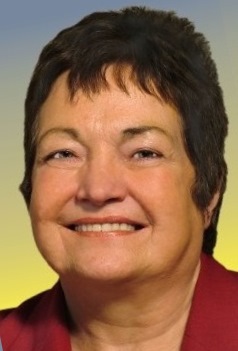 Dear Friends, Dear Friends,I am delighted to be attending this Summit, and I would like to thank President Gorbachev, Mayor Veltroni, and the City of Rome for hosting this event. Thank you for inviting me to make this contribution towards the Nobel Peace Laureates Charter for a Nonviolent World. I believe that, one of our greatest challenges as the human family, is to transform our violent cultures into a nonkilling, nonviolent culture for the World. This journey from violence to nonviolence will be long and difficult, but human beings mimic each other, and as increasingly more people reject violence, and use the alternatives available, others will follow their example, and change will happen. Already many people are asking, ‘Is it possible to move beyond violence? To build Nonkilling, Nonviolent societies, and World?’ I believe, the answer is YES! However, where violence is endemic, it is easy to be apathetic. Also, particularly in our current world political situation, faced as we are, with an ethical and moral crisis, brought about by many Governments’ abuse of their power, especially those Governments’ who have the most temporal power, often civil society feel disempowered and hopeless. But we should never give up hope. If we continue in a negative frame of mind, to accept violence, it will seriously threaten our quality of life, and our security. The bad news is that all violence, be it bullying, torture, homicide, violent crime, terrorism, violent revolution, armed struggles, suicide bombings, hunger strikes to the death, nuclear weapons, militarism, and war, tragically often take human life, and add to the culture of violence. And all violence, State and Non-state, is a form of injustice, which demeans us all. Killings by Governments, and nongovernmental armed groups, and threats to kill, underlie all other threats to the survival of humanity, damaging peoples’ physical, psychological, economic, social, cultural, and environmental, well-being. If we are to reverse this downward spiral of violence, we need to uphold the Principal that, everyone has a right not to be tortured, or killed, and a responsibility not to torture, kill, or support the killing of others. These are basic human rights enshrined in national and international laws and we all must stand firm on the upholding of these Rights by our Governments and by ‘armed revolutionaries’ or ‘armed insurgency groups’. The good news is that we are not born violent, most humans never kill, and the World Health Organization says Human Violence is a ‘preventable disease’. So happily we can be cured! Prevention starts in our own minds, with us choosing to reject negativity, changing to a positive, disarmed mindset, cultivating love of ourselves and others, and choosing not to kill. Prevention, also starts in our own conscience where we know what is right and refuse to be morally blinded in our mind and heart by nationalism and militarism, a moral disease which continues to destroy many people. For example, in Iraq, where the USA Government has carried out war crimes, in Chechnya where the Russian Government continues to commit war crimes, the Israel Government’s massacre in the occupied Palestinian terroritories, and State and non-state killings in many other places around our world. Nowadays we hear a lot of talk about security, the greatest power on earth, the United States, decided that the way to achieve security was through shock and awe, destruction of countries, and the multiple deaths of people including her own young men and women transformed into soldiers. Over 654,000 Iraqi civilians and over 2,800 USA soldiers have needlessly died. Such violent reactions endorse a culture of violence, rather than a culture of dialogue with its citizens and perceived enemies. In Northern Ireland, we have been through all of that. And we know that it doesn’t work. Violence does not prevent violence. The failure of militarism, paramilitarism, in Northern Ireland is mirrored in Iraq. Should it not be obvious that we are now at a point of human history where we must abolish the culture of violence and embrace a culture of nonviolence for the sake of our children and the children of the world? But is such a quantum leap of thinking possible? Nothing is possible unless we can imagine it. So what is meant by such a society? Prof. Paige in his book ‘Nonkilling Global Political Science’(1) says: “A nonkilling society can be defined as a human community from the smallest to the largest in which (a) there is no killing of humans and no threats to kill; (b) there are no weapons for killing humans and no ideological justifications for killing – in computer terms no ‘hardware’ and no ‘software’ for killing; and (c) there are no social conditions that depend, for maintenance or change, upon the threat or use of killing force”. I would add that it is not enough to decide not to kill but we need to learn to live nonviolently in our lives and families. Nonviolence is a decision to protect and celebrate life, to love oneself, others, and ones enemies, and to bring wisdom, compassion, forgiveness, and reconciliation into our relationships. Nonviolence recognizes principled dissent against injustice and the misuse of power and upholds the right to civil disobedience as an integral part of a democratic society. Nonviolence is based on unconditional love, truth, equality, justice, and respect for life, and all of creation. To build such a nonviolent culture we need first to move away from dependence upon threat and use of killing force for security, and by that I mean armies and all imitations of armies. Second, we must stop using our economic resources for the unholy alliance of arms dealers and warmongers. Currently there are over 20 million people under arms, and an annual military budget of one trillion dollars a year. According to one United Nations report, an investment of less than a fourth of the world’s collective annual expenditure on arms, would be enough to solve the major economic and environmental problems facing humanity. If this is true, and I believe that it is, isn’t it a crime against humanity that those who exercise power in our world continue to pour billions of dollars into so-called security enriching the arms dealers in the process, while neglecting the children who are dying every day of poverty and disease. Ending the military/industrial corporations stranglehold on many Governments’ policies, and introducing policies which meet the basic needs of the people would help remove many of the root causes of violence. We know what to do, but what is lacking is the will of economic and political leaders, who continue their policies to feed the death culture of war, nuclear weapons and arms. This then is just not a political, economic, and socio-cultural crisis but a deeply spiritual and moral one. The Human family is moving away from the violent mindset, and increasingly violence, war, armed struggles, violent revolutions, are no longer romanticed, glorified, or culturally accepted as ways of solving our problems. As a pacifist I believe that violence is never justified, and there are always alternatives to force and threat of force. We should challenge the society that tells us there is no alternative to violence. In all areas of our life we can adopt nonviolence, in our lifestyles, our education, our commence, our defense, our governance. Also the Political scientists and academics could help this cultural change by teaching nonviolence as a serious political science, and help too in the further development of effective nonviolence to bring about social and political change. Also by implementing the UN Decade for a Culture of Peace and nonviolence for the Children of the World, (2001-2010) and teaching it in educational establishments, can help evolve this new culture. Nonviolence is an ideal that has seldom been explored. But it is not an impossible ideal. History is littered with examples of nonviolent resistance, many of them successful. Gandhi and King successfully used nonviolence for human rights issues; Italy’s own St. Francis, a Mystic/ Ecologist/ Environmentalist, is a model to us of how to apply a holistic approach to living nonviolently, especially in a world where climate change is one of the greatest challenges to humanity’s future. Abdul Khaffer Khan, a great Muslim leader, demonstrated the power of courageous Islamic nonviolence through the unarmed Servants of God army and parallel government to liberate the Pathan people from British colonial rule in India’s North-West Frontier Province (now in Pakistan). Their example deserves to be known widely throughout the world (2). All Faith traditions can play a role in building this new culture, as each have their own prophets of nonviolence. They can teach the Golden Rule of ‘Do unto others as you would have them do to you’ and also to ‘love your enemies’, which, I believe, is necessary for humanity’s survival in this age of military madness. I speak from my own faith tradition which is Christian. I myself came into pacifism and nonviolence in the early l970’s. Facing State Violence I asked myself ‘As a Christian can I ever use violence”? I studied and rejected the ‘Just War’ theory and went to the cross where Jesus’ message of love your enemies, do not kill, is most clearly shown. I also agree with the American theologian, the late Fr McKenzie, who said ‘You cannot read the gospels and not know Jesus was totally nonviolent.’ He also described the Just War theory as a phony piece of morality. How tragic, in light of Jesus’ example, to know that the American Catholic Hierarchy, with a couple of honorable exceptions, have blessed yet again Catholics going to participate in an unjust, immoral and illegal war, in Iraq, thus ignoring their own Pope’s guidance on this matter. But, I believe, until the Christian Churches resurrect from their longstanding moral malaise of blessing, ambiguity, or consent-bestowing silence, on violence, militarism, and war, and gives Spiritual guidance by abolishing the Just War theory, and developing a theology more in keeping with the nonviolence of Jesus, it behooves those of us who are Christian, and those who follow other spiritual paths, or none, to follow our own conscience in such matters. As world citizens working together in solidarity we can abolish nuclear weapons and war, demilitarize the World, build neutral and nonaligned countries, develop unarmed policing and nonmilitary forms of self-defense. We can establish or strengthen nonviolent institutions, such as: Global Nonkilling Spiritual Council: Global Nonkilling Security Council: Global Nonkilling Nonmilitary self-defense Security, such as the Nonviolent Peaceforce: Global Nonkilling Leadership Academies: Global Nonkilling Trusteeship Fund: Ministries of Peace by National Governments: (2) (See sidebar, right). To build a nonviolent culture will also mean changing Patriarchal and Hierarchical systems which are unjust and under which women, suffer from oppressive structures and institutions. It will mean in particular challenging violence and injustice in our own societies and extending our support to all humans who suffer injustice everywhere. To people who are suffering torture, the imates in Guantanamo and other such Guantanamos in whatever country, and supporting whistleblowers like Mordechai Vanunu who continues to suffer for telling the truth. It will not be easy but it is necessary, and it is possible together, in our interconnected, interdependent human family, to build a new world civilization with a nonviolent heart. Peace and happiness to you all, Máiread Corrigan Maguire (www.peacepeople.com) Notes
|
Nonviolent institutions Global Nonkilling Spiritual Council: Composed of men and women elected to represent faiths and philosophies committed to principled nonkilling. Serves as a continuing body to counsel the United Nations, governments, other institutions, and world citizens. Global Nonkilling Security Council. Composed of persons elected among distinguished contributors to the theory, strategy, tactics, and practice of nonkilling domestic and transnational defense. Serves as a continuing source of nonviolent security alternatives for consideration by all parties in potential or actual deadly conflicts that threaten physical, economic and ecological well-being. Global Nonkilling Service: Composed of locally rooted professional and volunteer workers in every country, trained in nonmilitary skills of security, conflict transformation, constructive service, and humanitarian and disaster relief. Builds upon nonviolent military and nongovernmental experience such as the Gandhi and Shanti Sena and the Nonviolent Peaceforce. Global Nonkilling Leadership Academies: Prepares local and transnational leaders, partly by biographical studies, to take nonkilling initiatives in response to the interdependent human needs for security, economic well-being, dignity, ecological sustainability and problem solving co-operation. Seeks to build mutually strengthening relationships based upon the nonkilling principles in co operation with the United Nations University Japan, the UNU International Leadership Academy in Jordan, the University of Peace in Costa Rica, and other peace-seeking educational and training institutions. Global Nonkilling Trusteeship Fund: Established in the Gandhian tradition of mutual trusteeship for the well-being of all, honors pioneers of nonkilling service to humanity, throughout the world. Collects voluntary and service contributions to support implementing institutions. Management board to be composed equally between representatives of the most and least wealthy global citizens. |
||||||||||||||||
|
|
|||||||||||||||||
Beyond Violence in Ireland — Building Communities of Nonviolence, Living NonviolentlyBy Máiread Corrigan
Maguire
This presentation was given by Mairead Corrigan Maguire, as part of a series of talks in a five week course from September 28 to October 26, 2006, held to celebrate the 30th Anniversary of the Peace People: Journeying with Active Nonviolence. Talks were held by Peace People and Irish School of Ecumenics. Given on 28.9.2006 in Wellington Park Hotel, Belfast, Northern Ireland. Irish peacemaker Mairead Corrigan Maguire recieved the Nobel Prize for Peace in 1976.  Dear Friends, Dear Friends,I am very happy to be here and would like to thank the Irish School of Ecumenics and Kevin Cassidy, Peace People, for inviting me to give this talk. Also to thank Chairperson, Dr. Johnston McMaster, and respondees, Baroness May Blood, and Rob Fairmichael of INNATE — the Irish Network for Nonviolent Action Training and Education. In a Society such as ours, coming as we do out of over 35 years of violent ethnic / political conflict, I believe, the question must be asked ‘Is it possible to move beyond violence in Ireland? Build communities of nonkilling, nonviolence, and live nonviolently together? From my own experience, I believe, the answer is YES. However, in our situation and where violence and division is endemic, it is so easy to be apathetic. You hear remarks so often “This place will never change”. And not just here but in other places where I have been, the almost constant violence in the lives of the people, have led many to give up hope. But, we should never give up hope. If we continue in this negative frame of mind, to accept violence, it will seriously threaten our quality of life, our economic recovery, and our security. The bad news is that all violence, be it bullying, homicide, crime, terrorism, violent revolution, armed struggles, suicide bombs, hunger strikes to the death, nuclear weapons, war, tragically take human lives, cause much suffering, and adds to a culture of violence. And all violence, state and nonstate, is a form of injustice. The good news is that we are not born violent, most humans never kill, and the World Health Organization says human violence is a “preventable disease”. So happily we can be cured! Prevention starts with peace in our own hearts and minds. Prevention also starts by us, choosing to change to a more positive, self-acceptance and loving mindset, having confidence in ourselves and others, and continuing the hard work of tackling the root causes of our own violence, and others. Nowadays we hear a lot of talk about security. The greatest power on earth, the United States, decided that the way to achieve security was through shock and awe, destruction of countries, and the multiple deaths of people including her own young men and women transformed into soldiers. Such violent actions endorse a culture of violence, rather than a culture of dialogue with its citizens and perceived enemies. In Northern Ireland, we have been through all of that. And we know that it doesn’t work. Violence does not prevent violence. The failure of militarism, and Para militarism, in Northern Ireland is now mirrored in Iraq. Should it not be obvious that we are now at a point of human history where we must abolish the culture of violence and embrace a culture of nonviolence for the sake of our children and the children of the world? Embrace the idea of a nonkilling society. But is such a quantum leap of thinking possible? Nothing is possible unless we can imagine it. So what is meant by such a society? Prof. Glenn G. Paige in his book ‘Nonkilling Global Political Science’ says: “a nonkilling society can
be defined as a human community from the smallest to the
largest in which (1) there is no killing of humans and
no threats to kill, (2) there are no weapons for killing
humans and no ideological justifications for killing —
in computer terms, no “hardware” and no “software” for
killing, and (3) there are no social conditions that
depend, for maintenance or change, upon the threat or
use of killing force”.
I would add that it is not enough to decide not to kill, but we need to learn to live nonviolently in our lives and families. Nonviolence is a decision to protect and celebrate life, to love oneself, others, and ones enemies, and to bring wisdom, compassion, forgiveness and reconciliation into our relationships. It is a way of living in harmony with each other, the environment, and all of creation. To move towards such a culture, we need first to move away from dependence upon threat and use of killing force for security, and by that I mean armies and all imitations of armies. Second, we must stop using our economic resources for the unholy alliance of arms dealers and warmongers but use them instead to deal with the root cause of violence, i.e. poverty and injustice. If we provide education, health care, environmental protection, if we uphold human rights and the dignity of the human being, we will soon realize that a just society is its own security. Thirdly, we must deal with the social and psychological problems which we have inherited after 35 years of violent conflict, and a history of prejudice, sectarianism and discrimination. We have moved a long way already from the violent mindset. Happily too we have learned that we have a choice between, fight and flight, and that is the way of active nonviolence. As a pacifist I believe that violence is never justified, and there are always alternatives to force and threat of force. We must challenge the society that tells us there is no such alternative. In all areas of our lives we should adopt nonviolence, in our lifestyles, our education, our commerce, our defense, our governance. Also the Political Scientists, and academics, could help this cultural change by teaching nonviolence as a serious political science. That is an ideal that has seldom been explored. But it’s not an impossible ideal. History is littered with examples of nonviolent resistance, many of them were successful. For example, Norway’s teachers at great cost to them prevented the Nazification of Norway’s educational system by simply refusing to implement it. Gandhi and Martin Luther King successfully used nonviolence for human rights issues; Jesus successfully used it in founding Christianity. St. Francis, a mystic / ecologist / environmentalist, is a model to us of how we need to apply a holistic approach to living nonviolently, especially in a world where climate change is one of the greatest challenges to humanity’s future! We must make choices. Martin Luther King once said “The choice is between nonviolence and non-existence”. Again at this point in our Northern Irish history we face this choice as a society when we must not be complacent about our peace process but busy and involved in securing and building up the ground we have gained in justice and peace, fully conscious that in a political vacuum when all people cannot participate in just democratic politics, there is a danger that anger and frustration builds and violence is let loose again. Fear I believe that one of the barriers to progress is our fear. We can be glad that all Parties in Northern Ireland are agreeing that nonviolence is the way forward, and as the guns begin to fall silent (and hopefully loyalist paramilitary guns will soon too fall silent) we are given space to study our changing identities, and politics. However it is a sobering thought, and worth remembering, that there was no Army, no active Irish Republic Army, no loyalist paramilitaries, on the streets in Northern Ireland in l969, yet we had such a deep ethnic fear amongst a divided community that when the genie of violence was released, what became known as ‘the troubles’ became unstoppable for over 35 years. That fear, (and in some cases deep sectarian hatred) remains and it is this which we must recognize and work to remove if there is to be real change. As humans we each carry fear inside us. It’s alright to be afraid, but we must have the courage to face our fears and do what is right. People are afraid of many things. Fear of death, fear of embarrassment, fear of ethnic annialiation. Understanding and acknowledging this often irrational fear is the first step to dealing with it. In Northern Ireland where we have two main identities, and thankfully many others as we welcome new emigrant groups, we must learn to mellow our identities and put our common humanity above these diverse traditions and divisions. If we put too much into our identities, i.e. defining ourselves as against the other, ‘I’m Irish, Catholic, Nationalist, NOT British, Protestant, Unionist, and if we perceive this identity to be threatened in any way we can become violent. I believe, it’s time in Northern Ireland, we begun more to think of ourselves firstly, as part of the human family and remembered above all our common humanity. In 1998 the UN declared this to be the Decade of a Culture of Peace and Nonviolence for the Children of the World (2001-2010). Introducing nonviolence across the curriculum will help build a new culture. The media, who seem mesmerized by violence, have an important role to play. I was struck by how quickly the change took place from an accepting culture of smoking to the culture of nonsmoking. The government and media agreed that smoking was bad for our health, and helped change the culture. We can all agree violence is bad for our health, and the media can play its role by helping to stop the glorification and promotion of violence in our culture, i.e., through mass media, war games, etc., all means of desensitizing our children to what is cruel and inhumane. Those of us, who have lived the troubles, have a particular responsibility not to ever allow violence, war, and armed struggles, to be romanticed, glorified, or culturally accepted as ways of solving our problems. All faith traditions can play a role in building this new culture, as each has their own prophets of nonviolence. All faiths can agree to teach the Golden Rule of ‘Do unto others as you would have them do to you’. I myself came into pacifism and nonviolence in the early l970. Facing State violence, I asked myself “as a christian can I ever use violence”? I studied and rejected the ‘Just war’ theory and went to the cross where I believe Jesus’ message of love your enemies, do not kill is most clearly shown. I also agree with the American theologian, the late Fr. John L. McKenzie, who said: “You cannot read the gospels and not know that Jesus was totally nonviolent.” I believe too that Jesus with a machine gun does not come off as an authentic figure. But until the christian church begins to seriously live and teach the nonviolent message of Jesus, to abolish the Just War theory, to denounce nuclear bombs and war, it behooves those of us who are christian (and those who follow other spiritual paths or none) to seek truth in our own life, and live out of that with as much integrity as possible, respecting others right to their truth, their faith, and their way of life. Reconciliation and Integration of Our society In a polarized Society such as ours, we need to increase cross-community efforts and develop new ways of integration. Much work is being done, such as community, inter-church, interfaith, integrated education, — especially integrated schools — sports, cultural events, etc., We can each choose to be part of integrating our community and building friendships and trust or we can remain in the old mindsets and pass onto our children the distrustful concepts of ‘one of the other kind’ or ‘one of your own’. In Northern Ireland, we can move away from seeing each other in terms of flags and religions, and rather see each other, as flawed human beings, needing each other, and needing to love and be loved, as we each struggle to cope with the joy and the suffering of life’s journey. Forgiveness is the key to peace Many people have suffered violence. We have all suffered and bear the scars of violence. This leaves us with yet another choice. We can get stuck in recrimination and blame, and feed the seeds of our own anger and hatred, or we can choose to forgive and move on with our lives, determined to be happy and live each moment fully alive and celebrating this beautiful gift of life. If we get stuck in the past it can destroy our creativity and imagination, necessary to make a difference. Which do we want to choose? However, some people have said to me they find it hard to forgive. They feel too traumatized and they want to see justice done. This is very understandable. The process of forgiveness takes time, and it needs the support of family, friends, and often trained people to help people deal with the trauma and suffering involved. I commend the great efforts of many people helping in this area of suffering, and hope resources will continue to be provided to help the healing process of many people affected by the troubles. Trust A legacy of the Northern Irish conflict is our evident lack of trust. When the Good Friday Agreement was signed, for many it was not signed with ‘grace’ and there was not a conscious choice to trust others, nor a willingness to power sharing, nor a real commitment to work for the implementation of equal rights and full recognition of all national identities. I believe this lack of trust is still deep and is one of the causes of our political stalemate.Yet, we the people must make choices. I am asking now that we really start to trust one another. Although we have come a long way since the Good Friday agreement, we have yet to achieve our power sharing executive and working Assembly. I believe the civil community needs to unite its voice in insisting our political leaders sit down in a shared executive, and Assembly. Direct rule is not an option, and indeed is insulting and humiliating to the people of Northern Ireland as it questions our maturity and ability as civilized adults to run our own affairs and our own Parliament. One of the ideas we might consider is the establishment of a Ministry of Peace in our own Northern Irish Parliament, and also in the Dail. Also by devolving power and resources to local communities empowering them to fulfill their rights and responsibilities as citizens, will ensure that we, the Northern Irish people, can build a vibrant, nonviolent democracy right across the whole community, thus breaking down the divisive green and orange politics we have tragically inherited, and at the moment are dangerously trapped within. I have great hope for the future. I believe in the goodness and kindness, of the people of Ireland, both North and South. This was evidenced throughout the troubles with the many thousands of people, who every time there was serious violence, and it looked like we could go over the edge into civil war, they marched to say ‘no to violence’, ‘yes to peace’. It must always be remembered the tremendous role the civil community played, particularly in Northern Ireland, in building the peace. Many of those people are still there, and it is in them, and their children, that I rest my hope for a better future in our country. As world citizens too, I think we can join with millions of our brothers and sisters, working where they are, for nonviolent transformation. This will mean building a demilitarized Ireland and Britain (with no armies) building neutral and nonaligned countries in Europe and around the world, developing unarmed policing and nonmilitary forms of defense. It will also mean changing patriarchal and hierarchical systems which are unjust and under which women suffer from oppressive structures and institutions. It will not be easy, but is necessary and it is possible together to build a new world civilization with a compassionate and just heart. Peace and happiness to you
all,
Máiread Corrigan Maguire www.peacepeople.com 28.9.2006 Find much more about Maquire... |
|||||||||||||||||

